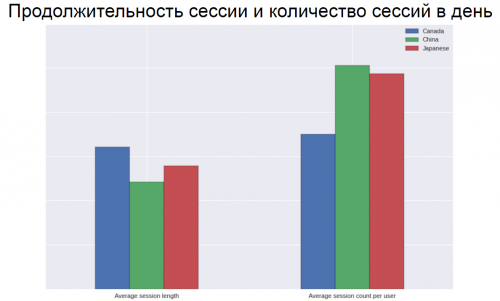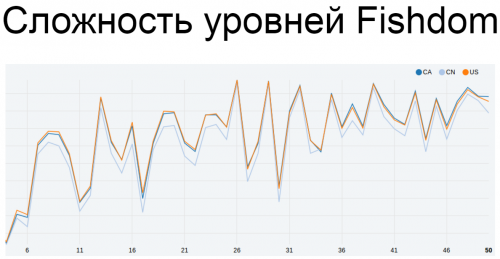The complexity curve in Fishdom and behavioral markers of employees are in the material about what Playrix specialists shared with each other at the company’s internal conference.

Internal conferences are not a new topic for large foreign companies. In the gaming industry, a notable event is the regular King Convention. If we talk about the CIS, we recall the events held by Wargaming. For Playrix, which gathered 220 of its employees in Vologda in July, this topic is also not new. The current internal conference was the third for the company.
The emphasis on such events strongly depends on the companies that hold them. Some pursue an educational goal, others work on team building. For Playrix, an internal conference is an important component of the “remote cooperation scheme”, within which the company’s distributed team functions.
Recall that one of the distinctive features of Playrix is that about 50% of the company’s staff works remotely. In total, the team consists of more than 280 people from 60 cities.

Such a gathering of the Playrix team in one place at one time twice a year is an opportunity for a solid part of developers to go beyond digital communication with each other, to get to know each other personally, live.
During the conference, the main event is the general meeting on the strategy and the results of its implementation in the context of the entire company and each of its projects. It is clear that the information from there does not go beyond the company. In total, two dozen reports were made during the week, some of which were held in a time-limited format. We will focus on two of the most interesting, in our opinion, of the five-minute speeches.
Hot segmentation
The first report concerned the so-called “hot segmentation”.
“Hot segmentation is the distribution of the audience into segments on the fly, depending on some parameters at some point in time, for example, at the start of a gaming session or at the time of obtaining a new level,” said Oleg Kozlov, an analyst at the company.
Segmentation itself is necessary for proper analysis of player behavior. It is impossible to “row all under one comb”. This is especially vividly demonstrated by a slide with the daily duration of sessions and the number of visits to the game for the average player from Canada, China and Japan.

On the slide, we see that the Chinese player makes more sessions per day, but they are shorter than the Canadian user. This means that you should work with each of them in different ways. It is impossible to find out without segmentation of users.
“A variety of parameters can be used for segmentation, both fairly obvious, which usually do not require any calculations and are taken as is, for example, the player’s level, region, device, and others, and non-obvious, in most cases calculated from some others: how many days it took the player to get to the level X, how much time passes between purchases and so on,” Oleg noted.
Another clear demonstration of the importance of segmentation is the difference in how the same levels of the same game are played in different regions. The first 50 levels of Fishdom, for example, are perceived by Chinese players as simpler. For Canadians, these same levels seem more difficult. In theory, this means that it makes sense to adjust the difficulty based on the geographical feature of the player.

Playrix itself uses hot segmentation to change advertising settings.
“We wanted to start showing ads to certain players earlier, without spoiling the conversion. We conducted a study, tested levels with different sets of parameters. The best accuracy was obtained for level 12. When it is reached, a check is performed on how long the player got to it, if from 7 to 50 days, then you can start showing him ads. We conducted an A/B test. The test group began to show ads, the control group was left unchanged. Players began to actively watch ads, which brought an increase in advertising revenue. At the same time, the conversion rate for the control and test groups was the same, monetization by store sales did not suffer,” Oleg gives an example.
IT games
Natalia Zueva, Playrix Project manager, shared a report that raises an interesting topic about conflict situations that hinder the success of any team.
The causes of conflicts often lie in the fact that a person can consciously or unconsciously play the so-called “game”. Why he does it is difficult to say, often we are talking about strictly individual reasons. In any case, every person is interested in winning – a person may want both a positive result and a win with a “negative” result. In the presentation, Natalia analyzes the signs of when employees “play” like that.
The speaker identified five problematic types:
- fan
- I was painting the Chinese wall
- bubble
- persuade me
- balloon or “untouchable”
“Fans” can be recognized by markers, like “we won’t succeed because”, “I already told you”, “someone won’t let me do the job”. The purpose of their “game” (conscious or not – a separate question) is to evade responsibility, or unwillingness to do the task. Plus, with their whining, they always leave for themselves the opportunity to say: “I warned you” (in fact, also the removal of responsibility).

“I painted the Chinese wall” is characterized by the fact that they perform tasks for a very long time and do not end in any way. Moreover, insurmountable problems arise all the time during implementation. As a result, the problem, as a rule, is not solved. This type of employee, as a rule, either simply does not want to work, or wants to increase his role on the project.
“Bubbles” differ from others in that they constantly offer ideas, but, as a rule, they cannot answer why they should be implemented. With their proposals, they either at least build a Chinese wall, or find a reason for, for example, dismissal.
“Persuade me” are distinguished by such markers as “well, since you think”, “I don’t care what happens there”, as well as pronounced passivity. Their goal is often to “fail” the project, or initially to absolve themselves of responsibility if something goes wrong.
“Balloon, or “untouchables” is another type of employee that slows down development. The most common reason for their similar behavior is that they want to create a comfortable “swamp” around the team. Such behavior also allows such “professionals” to declare upon dismissal that they were prevented from working properly.

Was there anything else?
During the week, Playrix held many meetings for its employees in various areas: game design, programming, marketing, testing, art, customer service, analytics, HR and PR. Of course, the week of the conference was not limited to working meetings only.
Every day Playrix held informal events, including an introduction party and a traditional corporate party on the last day of the conference. But the highlights of the informal program were a photo quest around the city and a tournament on intellectual games.
The internal Playrix conference was held from July 4 to July 9. Photos from the event can be viewed here.
